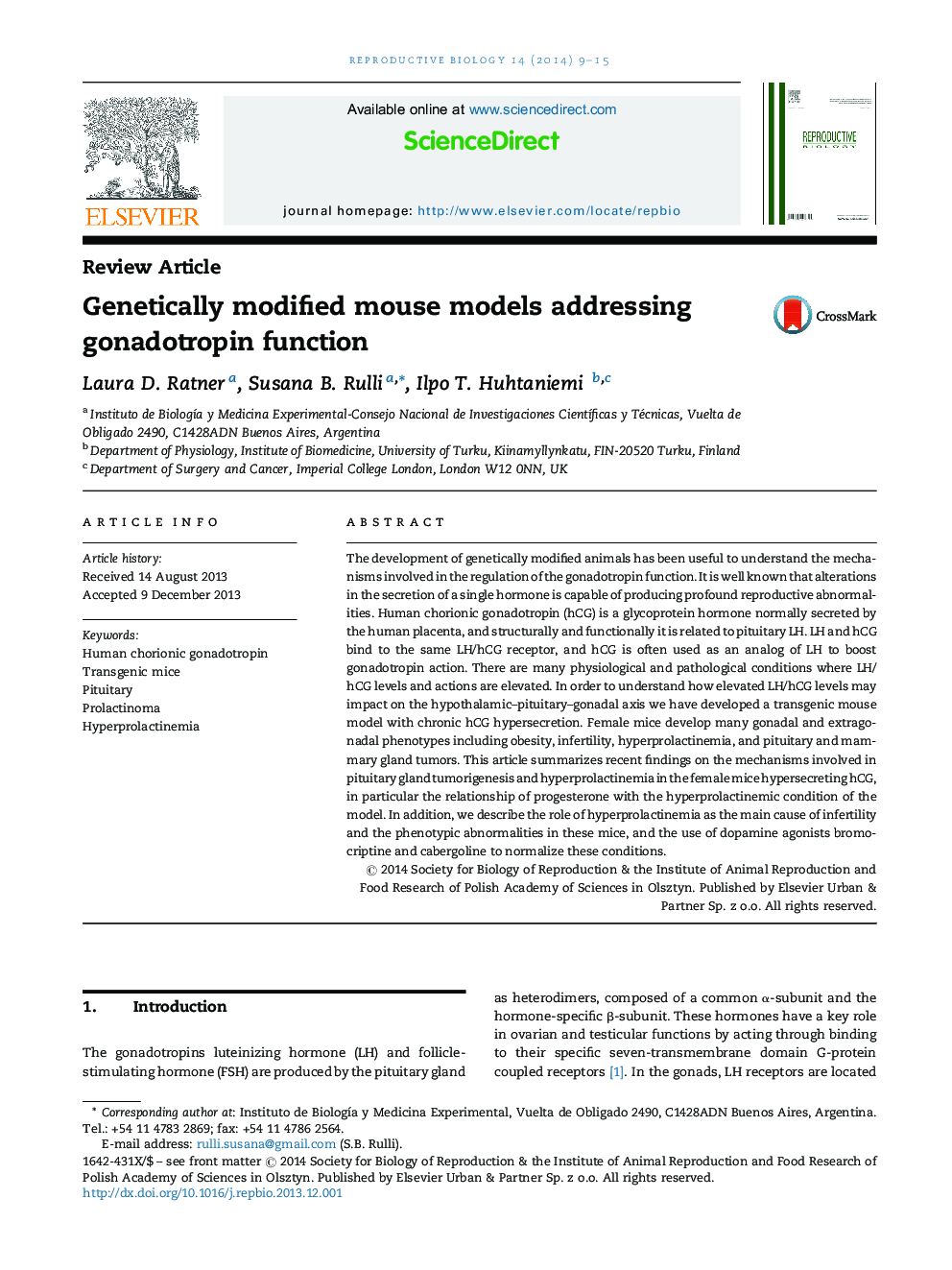| کد مقاله | کد نشریه | سال انتشار | مقاله انگلیسی | نسخه تمام متن |
|---|---|---|---|---|
| 2062493 | 1076611 | 2014 | 7 صفحه PDF | دانلود رایگان |
The development of genetically modified animals has been useful to understand the mechanisms involved in the regulation of the gonadotropin function. It is well known that alterations in the secretion of a single hormone is capable of producing profound reproductive abnormalities. Human chorionic gonadotropin (hCG) is a glycoprotein hormone normally secreted by the human placenta, and structurally and functionally it is related to pituitary LH. LH and hCG bind to the same LH/hCG receptor, and hCG is often used as an analog of LH to boost gonadotropin action. There are many physiological and pathological conditions where LH/hCG levels and actions are elevated. In order to understand how elevated LH/hCG levels may impact on the hypothalamic–pituitary–gonadal axis we have developed a transgenic mouse model with chronic hCG hypersecretion. Female mice develop many gonadal and extragonadal phenotypes including obesity, infertility, hyperprolactinemia, and pituitary and mammary gland tumors. This article summarizes recent findings on the mechanisms involved in pituitary gland tumorigenesis and hyperprolactinemia in the female mice hypersecreting hCG, in particular the relationship of progesterone with the hyperprolactinemic condition of the model. In addition, we describe the role of hyperprolactinemia as the main cause of infertility and the phenotypic abnormalities in these mice, and the use of dopamine agonists bromocriptine and cabergoline to normalize these conditions.
Journal: Reproductive Biology - Volume 14, Issue 1, March 2014, Pages 9–15
